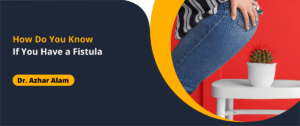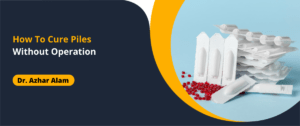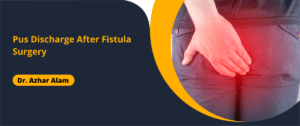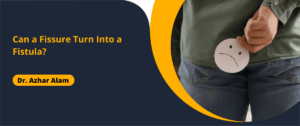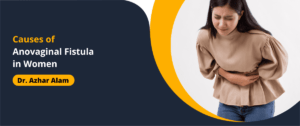
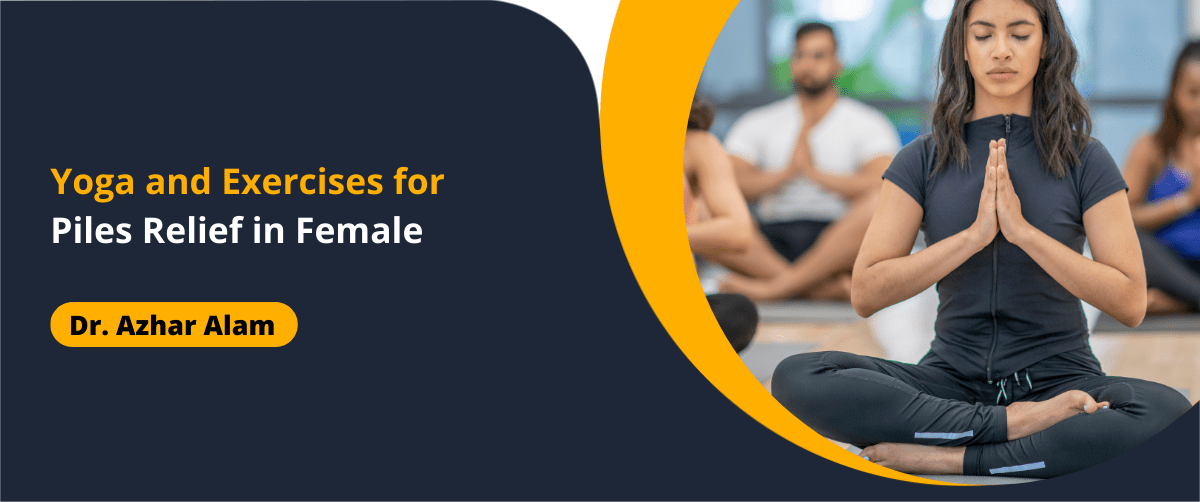
Yoga for Piles Relief in Females
Did you know piles, commonly known as hemorrhoids, can be a real pain in the anas? You know, that condition can affect both males and females, causing discomfort and making it difficult to do your daily activities? While it is a common ailment, females may experience additional challenges due to factors like pregnancy and childbirth. Yoga and targeted exercises offer a holistic and non-invasive approach to managing and relieving piles in females. This article explores the connection between yoga, exercises, and piles relief, providing a comprehensive guide for females seeking natural and effective solutions.
Understanding Piles in Females
Piles Doctor in Kolkata says that piles or hemorrhoids are swollen and inflamed blood vessels in the rectum and anus that can cause discomfort, bleeding, and pain during bowel movements. Female-specific factors, such as pregnancy and childbirth, can contribute to the development of piles. During pregnancy, the uterus expands and puts pressure on the pelvic veins, which can cause congestion and swelling of the blood vessels, leading to discomfort and other symptoms. It’s just one of the many changes during this exciting time! Additionally, the strain of childbirth can further exacerbate the condition. Hormonal changes and increased progesterone levels during pregnancy also contribute to the relaxation of the veins, making females more susceptible to piles.
Also Read: Managing Piles After Childbirth
The Role of Yoga in Piles Relief
Yoga is an ancient and time-tested practice that expertly combines physical postures, breath control, and meditation. It is widely recognized and celebrated for its therapeutic benefits. Dr Azhar Alam, a piles doctor in Kolkata, says that yoga offers a gentle and holistic approach to piles relief in females. Certain yoga poses and practices can help alleviate symptoms, strengthen the pelvic floor muscles, and improve overall well-being.
1. Pelvic Floor Exercises:
Yoga emphasizes engaging the pelvic floor muscles, which are crucial in supporting the rectum and anus. Practices like Kegel exercises, often incorporated into yoga routines, help strengthen these muscles, reducing the risk of piles and promoting faster recovery.
2. Pawanmuktasana (Wind-Relieving Pose):
This pose involves lying on your back and bringing your knees to your chest, gently applying pressure to the abdomen. Pawanmuktasana aids in releasing excess gas, reducing bloating, and improving digestion, which can benefit those with piles.
3. Malasana (Garland Pose):
Malasana involves squatting with the feet flat on the floor, promoting healthy bowel movements and reducing pressure on the rectum. This pose helps prevent constipation, a common contributor to piles.
4. Supta Matsyendrasana (Reclining Fish Pose):
This reclining twist helps massage and stimulate the abdominal organs, promoting digestion and relieving constipation. Improved digestion is crucial in preventing and managing piles.
5. Baddha Konasana (Bound Angle Pose):
Also known as the Butterfly Pose, Baddha Konasana involves sitting together with the soles of the feet. This pose helps open the pelvic area, improving blood circulation and reducing pressure on the rectal veins.
The Importance of Breathing Techniques
In addition to physical postures, pranayama, or controlled breathing, is integral to yoga and piles relief. A reputed Piles doctor in Kolkata advises that deep breathing techniques can help relax the pelvic floor muscles, reduce stress, and improve overall well-being. Incorporating pranayama techniques such as Bhramari (Humming Bee Breath) and Nadi Shodhana (Alternate Nostril Breathing) can benefit females dealing with piles.
Also Read: Causes And Symptoms Of Piles In Female
Exercises for Piles Relief in Females
In conjunction with yoga, targeted exercises can enhance pile relief in females. A piles specialist doctor says these exercises strengthen your core, boost circulation, and enhance your digestive health.
1. Kegel Exercises:
Regularly practising Kegel exercises can help improve muscle tone in your pelvic region. This can reduce the risk of piles and even aid in their management. To do Kegel exercises, contract and relax your pelvic floor muscles. By doing so, you can help improve your overall pelvic health.
2. Bicycle Crunches:
This abdominal exercise helps strengthen the core muscles and improve digestion. Lie on your back and pedal your legs like riding a bicycle while engaging your core.
3. Leg Raises:
Leg raises target the lower abdominal muscles and promotes blood circulation in the pelvic region. Lie on your back and lift your legs, keeping them straight. Lower them back down without touching the ground to engage the core muscles.
4. Cat-Cow Stretch:
This dynamic stretch involves moving between arching and rounding the back. “Did you know that massaging your abdomen can improve digestion and relieve the strain on your rectal veins? It’s true! Give it a try and see if you notice a difference in how you feel.”
5. Walking:
Engaging in regular walking is a simple yet effective exercise for piles relief. Walking promotes bowel regularity, prevents constipation, and enhances overall cardiovascular health.
Lifestyle Modifications for Piles Relief:
In addition to yoga and exercises, lifestyle changes can significantly contribute to piles relief in females.
1. Hydration:
Drinking adequate water is essential for maintaining soft and regular bowel movements. Proper hydration can prevent constipation, a major contributor to piles.
2. Fiber-Rich Diet:
Including high-fiber foods like fruits, vegetables, and whole grains can improve digestive health and prevent constipation. Not only does fibre add bulk to your stool, making it easier to pass, but it also supports overall gut health and may even lower the risk of certain diseases. So, why change your diet and reap the benefits of a healthier digestive system?
3. Avoiding Straining:
Did you know straining during bowel movements can worsen those pesky piles? Piles specialist doctor advises to maintain good health, it’s important to respond promptly to the urge to have a bowel movement and avoid spending too much time on the toilet.
4. Regular Exercise:
Incorporating regular physical activity into daily routines helps maintain a healthy weight, improve circulation, and prevent constipation, all contributing to piles relief.
5. Mind-Body Practices:
Did you know that stress and anxiety can make piles symptoms even worse? You can manage stress with simple techniques and improve your well-being. Have you ever tried meditation, mindfulness, or relaxation exercises? Give them a try and see how they can help you feel better!
Also Read: Can Piles Cause Death?
Conclusion
Yoga and exercises play a pivotal role in piles relief for females, offering a holistic and natural approach to managing this common condition. The integration of specific yoga poses, pelvic floor exercises, and targeted physical activities not only addresses the symptoms but also focuses on preventing the recurrence of piles. With lifestyle modifications and mindful practices, females can find lasting relief and enhance their overall well-being. Individuals with health conditions should consult with Piles doctor in Kolkata before starting any new exercise or yoga routine.
About Docor

Dr. Azhar Alam
MBBS (Honours), MRCS A (UK),
DNB General Surgery
FIAGES (Gastro Intestinal Surgery)
FMAS (Minimal Access Surgery),
MNAMS (New Delhi)
Consultant Gastrointestinal, Advanced Laparoscopic and Laser Surgeon
Assistant Professor of Surgery, KPC Medical College and Hospital
